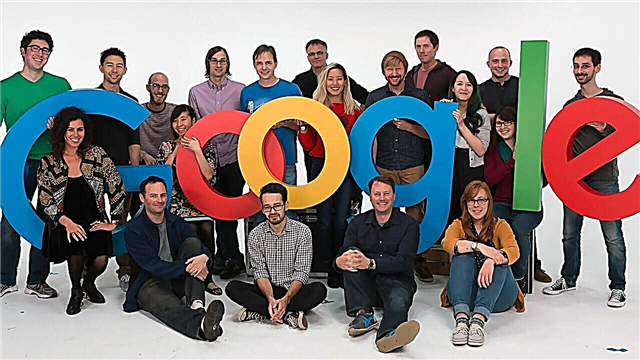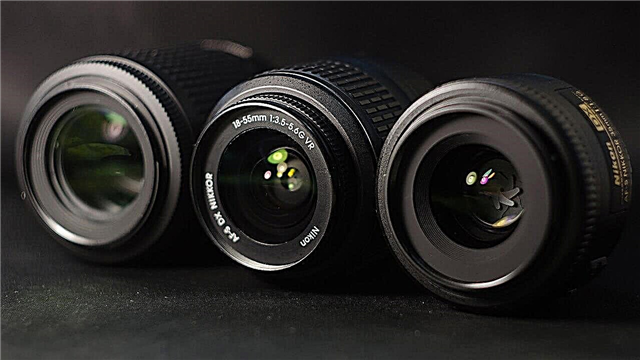The connection between animals and humans is both earthly and divine. Animals were mentioned in the Qur'an and the Bible, as well as in sacred Buddhist texts. They penetrated even the folklore and traditions of almost all the peoples of the world. So do not take your pets away from their blue screens, because we will talk about ten amazing animals that have left their mark on history.
10. Betsy's Dog
 Border Collies are considered the smartest of all dog breeds. However, among the representatives of this breed there are geeks. Like, for example, the Betsy Border Collie, who was born in 2002 in Vienna, Austria. When she was only 10 weeks old, she already understood the command "sit", and knew a lot of objects, such as a ball and a set of keys. She even brought them at the command of the owner.
Border Collies are considered the smartest of all dog breeds. However, among the representatives of this breed there are geeks. Like, for example, the Betsy Border Collie, who was born in 2002 in Vienna, Austria. When she was only 10 weeks old, she already understood the command "sit", and knew a lot of objects, such as a ball and a set of keys. She even brought them at the command of the owner.
Studies have proven that the learning speed of human children and betsy is the same. She has a vocabulary of more than 340 words, which competes with the vocabulary of monkeys in terms of intelligence and lateral thinking. Betsy’s interaction with humans is considered evolution in the dog world.
9. Dog Dzhulbars
 It is not known how many words Dzhulbars knew. But it’s known that during the Great Patriotic War the dog, possessing a phenomenal instinct, found over 7000 mines and 150 shells.
It is not known how many words Dzhulbars knew. But it’s known that during the Great Patriotic War the dog, possessing a phenomenal instinct, found over 7000 mines and 150 shells.
In 1945, he was to take part in the Victory Parade. However, due to injuries, the dog could not pass in line with his tailed mine-searching colleagues. When Joseph Stalin was informed about this, he gave his overcoat so that Dzhulbars could be carried on it along Red Square.
Having recovered from his wounds, Dzhulbars took part in the filming of the movie "White Fang" in 1946 based on the eponymous story by Jack London.
8. Hippopotamus Hubert
 This female hippo was one of the most famous animals of the 20th century. It is not known what made Hubert to decide on a long and dangerous journey from the mouth of the Santa Lucia River in the Zulu Kingdom to the Eastern Cape (almost 1,600 km between them). However, she set to work with enthusiasm and without hesitation.
This female hippo was one of the most famous animals of the 20th century. It is not known what made Hubert to decide on a long and dangerous journey from the mouth of the Santa Lucia River in the Zulu Kingdom to the Eastern Cape (almost 1,600 km between them). However, she set to work with enthusiasm and without hesitation.
It took Hubert three years to complete the journey. She crossed roads, ate in parks, walked around cities, to farms, and even spoiled the grass of golf courses. People treated her with fruits, and journalists described the movement of the hippo for her many fans.
Unfortunately, Hubert’s journey ended tragically. In 1931, a group of hunters in East London shot her. The Huberta scarecrow is currently in the Museum of Natural and Cultural History of King Williams Town.
7. Dog Rin Tin Tin
 This dog, along with his 4 brothers and mother, was rescued from the battlefield by American Lee Duncan during the first world war. It is unlikely that his new owner expected that an ordinary German Shepherd puppy would soon become a movie star. However, Duncan and his pet were lucky to be in the right place at the right time. Studio Warner Brothers just filmed scenes with the participation of the wolf in the film "Man from the Hell River." Here in the role of a toothy predator, Rin Tin Tin starred.
This dog, along with his 4 brothers and mother, was rescued from the battlefield by American Lee Duncan during the first world war. It is unlikely that his new owner expected that an ordinary German Shepherd puppy would soon become a movie star. However, Duncan and his pet were lucky to be in the right place at the right time. Studio Warner Brothers just filmed scenes with the participation of the wolf in the film "Man from the Hell River." Here in the role of a toothy predator, Rin Tin Tin starred.
The film really liked the audience, and the four-legged actor became one of the most profitable Hollywood stars, appearing in 27 films. This dog even has its star on the Hollywood Walk of Fame. Rin Tin Tin "went to the rainbow" at the age of 13, in 1932.
6. Sheep Dolly
 Having been born on July 5, 1996, this fluffy lump became first cloned mammal. Dolly emerged from an adult (somatic) cell, the nucleus of which was transplanted into the cytoplasm of the egg.
Having been born on July 5, 1996, this fluffy lump became first cloned mammal. Dolly emerged from an adult (somatic) cell, the nucleus of which was transplanted into the cytoplasm of the egg.
With her birth, a scientific and social revolution took place. Some prominent scientists have openly expressed doubt about the possibility of such cloning. It was too good to be true. But then other animals were cloned: first a laboratory mouse, and then cows, goats, pigs, horses, dogs, ferrets and even camels. By early 2000, all doubts had disappeared: Dolly was real, and cloning of adult animals was possible.
The consequences of animal cloning in our society were obvious from the start. The ability to reprogram adult, already specialized cells and launch them as something new, may one day become the key to creating cells and organs that correspond to the immune system of each individual patient. And this opens up tremendous opportunities for replacing tissues damaged as a result of injuries, genetic disorders and degeneration.
5. Lioness Elsa
 In 1956, a huntsman from Kenya George Adamson and his wife Joy adopted a little lion cubcalling her Elsa. For several years, the Adamsons took care of a predatory pet. In the end, the couple freed Elsa, and, surprisingly, she settled in the wild.
In 1956, a huntsman from Kenya George Adamson and his wife Joy adopted a little lion cubcalling her Elsa. For several years, the Adamsons took care of a predatory pet. In the end, the couple freed Elsa, and, surprisingly, she settled in the wild.
In 1960, Joy published the popular science book “Born Free” about the experience of raising Elsa. Six years later, a film based on this book was released. It is still being promoted in order to preserve wildlife.
4. Horse Lovely Jim Key
 At the end of the 19th and the beginning of the 20th century, approximately ten million Americans watched a performance by a horse named the Fine Jim Key and his trainer and owner William Kay. All major newspapers wrote about this pair, making Jim one of the most famous horses in the world. Not bad for a faint of heart animal and a former slave.
At the end of the 19th and the beginning of the 20th century, approximately ten million Americans watched a performance by a horse named the Fine Jim Key and his trainer and owner William Kay. All major newspapers wrote about this pair, making Jim one of the most famous horses in the world. Not bad for a faint of heart animal and a former slave.
Thanks to the humane teaching methods of a self-taught veterinarian, Jim Key “learned” to read, write, fold, sort mail and even use a cash register and telephone. The miracle horse demonstrated all these skills to an enthusiastic audience throughout the country.
3. Dog Balto
 In 1925, doctors in Alaska faced a deadly dilemma. The diphtheria epidemic swept the city of Nome, located on the far west coast of Alaska, and the only serum that could save them was in Seattle. Unable to deliver the medicine by plane due to difficult weather conditions, officials came up with an alternative: they used several groups of dog sled drivers to deliver whey to the settlement.
In 1925, doctors in Alaska faced a deadly dilemma. The diphtheria epidemic swept the city of Nome, located on the far west coast of Alaska, and the only serum that could save them was in Seattle. Unable to deliver the medicine by plane due to difficult weather conditions, officials came up with an alternative: they used several groups of dog sled drivers to deliver whey to the settlement.
The team led by Balto, a black-and-white Siberian husky, led the team that successfully crossed the last stretch of the route and delivered the vaccine to Nome. He was able to lead the team through a blizzard in the dead of night in order to bring medicine that people need so much. Having reached the city in the early morning of February 2, 1925, Gunnar Kaasen, who led the team, said only three words: “Damn good dog».
Balto became famous throughout the world, becoming one of the symbols of perseverance and courage. Several films and cartoons were dedicated to him, and a monument was erected.
2. Dog Hachiko
 This is perhaps the most famous dog in the world. The most loyal friend of the Akita Inu breed made hundreds of people sob with emotion and pity when watching a movie with Richard Gere.
This is perhaps the most famous dog in the world. The most loyal friend of the Akita Inu breed made hundreds of people sob with emotion and pity when watching a movie with Richard Gere.
Hachiko was a dog known for its endless fidelity and love for its owner Eisaburo Ueno, a professor at the University of Tokyo. Every day, Hachiko waited for the owner at the Shibuya railway station, but once Ueno did not return from work, he died right at the university from a brain hemorrhage. However Hachiko came to the station every day for 9 years. Now a bronze statue is installed on this place.
Unfortunately, in Russia there are many of their Hachikos who have been abandoned or forgotten by the owners, but continue to faithfully wait for them for years. Only about them do not make films and rarely write in the press.
1. Cat Unsinkable Sam
 Perhaps Sam was not the most beautiful cat in the world. But he was phenomenally happy.
Perhaps Sam was not the most beautiful cat in the world. But he was phenomenally happy.
His naval career began during the Second World War, on the German battleship Bismarck. This warship participated in the battle with the British battleship "Prince of Wales", was badly damaged and became uncontrollable. The ship eventually sank, and only 115 of the more than 2,200 crew survived. A few hours later Sam (then called an Oscar) was found floating on a board. He was saved by sailors from the British destroyer Cossack. It was then that unsinkable Sam switched to the side of the Allies.
For several months, the cat regularly caught mice on the "Cossack", while the ship performed the duties of escorting convoys in the Mediterranean Sea and the North Atlantic. During this period, everything went pretty smoothly, but in the end, the ship was badly damaged by a torpedo German submarine, and 159 crew members were killed. An Oscar was found clinging to a piece of board and was taken to a coastal facility in Gibraltar. After that, the British officers changed his name to Unsinkable Sam. But his adventures are not over yet.
 Unsinkable Sam was received by the crew of the Ark Royal aircraft carrier - ironically, it was this ship that contributed to the sinking of the Bismarck. Ark Royal survived several attacks and gained a reputation as a "happy ship." But luck did not last long, and, returning from Malta on November 14, 1941, this ship was also torpedoed. This time, Sam was found clinging to a board and described as "an evil, but completely unscathed cat."
Unsinkable Sam was received by the crew of the Ark Royal aircraft carrier - ironically, it was this ship that contributed to the sinking of the Bismarck. Ark Royal survived several attacks and gained a reputation as a "happy ship." But luck did not last long, and, returning from Malta on November 14, 1941, this ship was also torpedoed. This time, Sam was found clinging to a board and described as "an evil, but completely unscathed cat."
This time, even with a tailed lucky was enough. He was transferred to work on land and spent time hunting mice in the residence of the governor of Gibraltar. He was then sent back to the UK, where he remained at the House of Sailors in Belfast until the end of his days.












